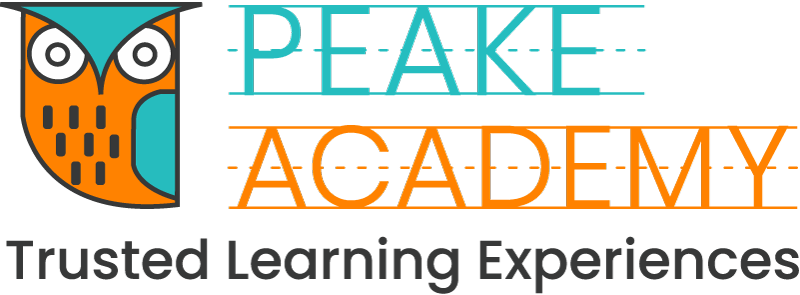Yes! It's OK to Let your Child to Play Alone and Here's How
It can be hard to let go and allow your child to play alone. After all, we want our kids to be safe and secure at all times. But allowing them some time on their own is an important part of growing up; it’s OK for parents to take a step back, and you don’t need to feel guilty about it! At Peake Academy, teachers understand that giving children the freedom to explore, discover and create independently helps them develop essential skills such as problem-solving, creativity, and risk assessment. When supervised correctly by adults in a safe environment, independent play allows children the opportunity to learn about themselves and build confidence.
It doesn't have to be difficult or scary for parents either! Take it from teachers: you can make sure your child has plenty of opportunities for independent play while still keeping them safe by following these tips.
Put Away the Light up Singing and Buzzing Type Toys
The best options for independent play are those that kids may experiment with in a variety of ways. Consider plastic food storage containers, building pieces and figurines, or a collection of varying-sized cardboard boxes. Additional suggestions include art supplies, playhouse decorations, dolls and plush animals, balls and baskets, toy cars, etc.
Be Sure to Have Age Appropriate Toys
While a little challenge is good, if the toy is too difficult to figure out, your child will need a lot of assistance from you. Another thing to keep in mind is quality over quantity. Overwhelming amounts of toys may actually shorten a child's attention span while they are playing.
Make a Fun Child-Safe Play Space in the House
Playing just isn’t as fun when there are too many rules and regulations. Create a special space just for your child that is safe for them to play in. If you can, remove screens from the play area. When playing, keep all screens off (unless you are, of course, working on one!)
Have Realistic Expectations
A toddler's attention span by the age of two is between five and six minutes. Children as young as three and as old as four can focus for up to eight and around ten minutes, respectively. If solo play is new to your preschooler, start with 5 minutes and increase as they become used to it.
Play Together Before Requiring Alone Play
Another great way to transition to independent play is to start by playing together with your child for the first 15-20 minutes. Mute your phone and give your child your undivided attention.
Keep it Upbeat
Maintaining a cheerful attitude is the most crucial advice. You can say something like, "What time is it? It’s your playtime! I’ll set the timer for 10 minutes. While you play, I will be reading a book, folding clothes, or working at my desk. When you’re done, you can fill me in on everything. Have fun!” Playtime should be an enjoyable opportunity included into the daily schedule. Steer clear of phrases like: "I really need to work now and you have to go play by yourself.” That’s no fun!
Stay Nearby
Remember, playing alone does not mean playing without supervision. Continue with your own task while keeping an eye on your child. Your presence provides the safety and security that kids need to learn and play at their best. Children can concentrate their attention on play when they can look up and check in.
It's perfectly okay to let your child play alone and there are several ways to support them in this. By fostering independent play, you are helping your child develop important skills such as creativity, problem-solving, and self-reliance.
While it may be tempting to constantly entertain and direct their play, stepping back and allowing them to play independently can greatly benefit their growth and well-being. Every child develops at their own pace and it's important to encourage their unique interests and passions. So, embrace the idea of solo play and watch your child thrive in their own independent playtime.
Free Resource
Thank you for reading this content. And if you loved this post, please be sure to join our Parent Advisor Facebook group where we share more insights and community.
Here’s a FREE Trivia for Preschooler printable cards made by Peake Academy Preschool At Home to help you and your kid have a fun and enjoyable learning experience at home.
Visit our Parent Advisor and The Buzz Blogs to learn more about related topics and parenting tips. You are welcome to join our private Parent Advisor Facebook group. It’s a growing community of parents and preschool teachers where you can learn and share more parenting tips.









